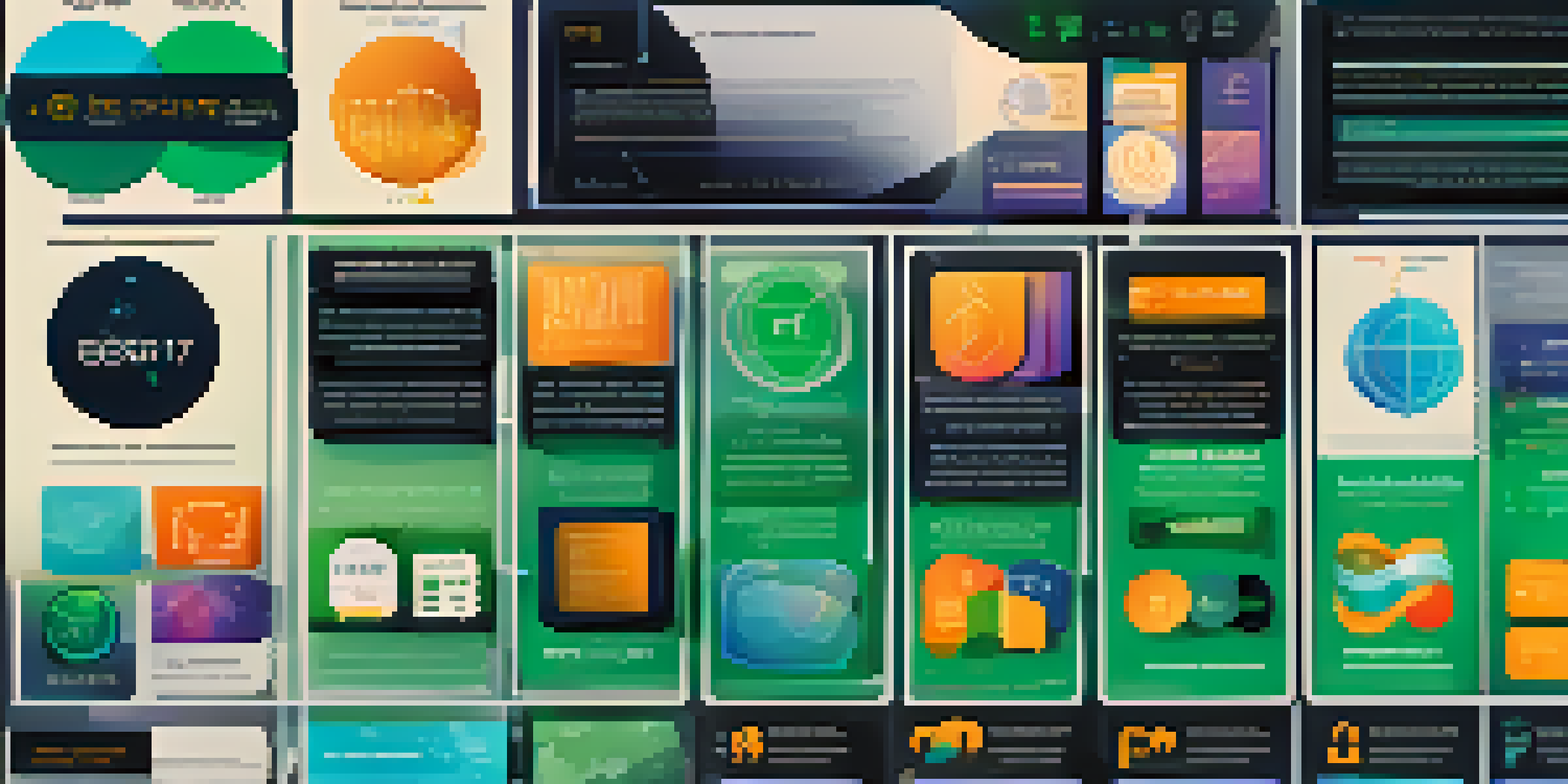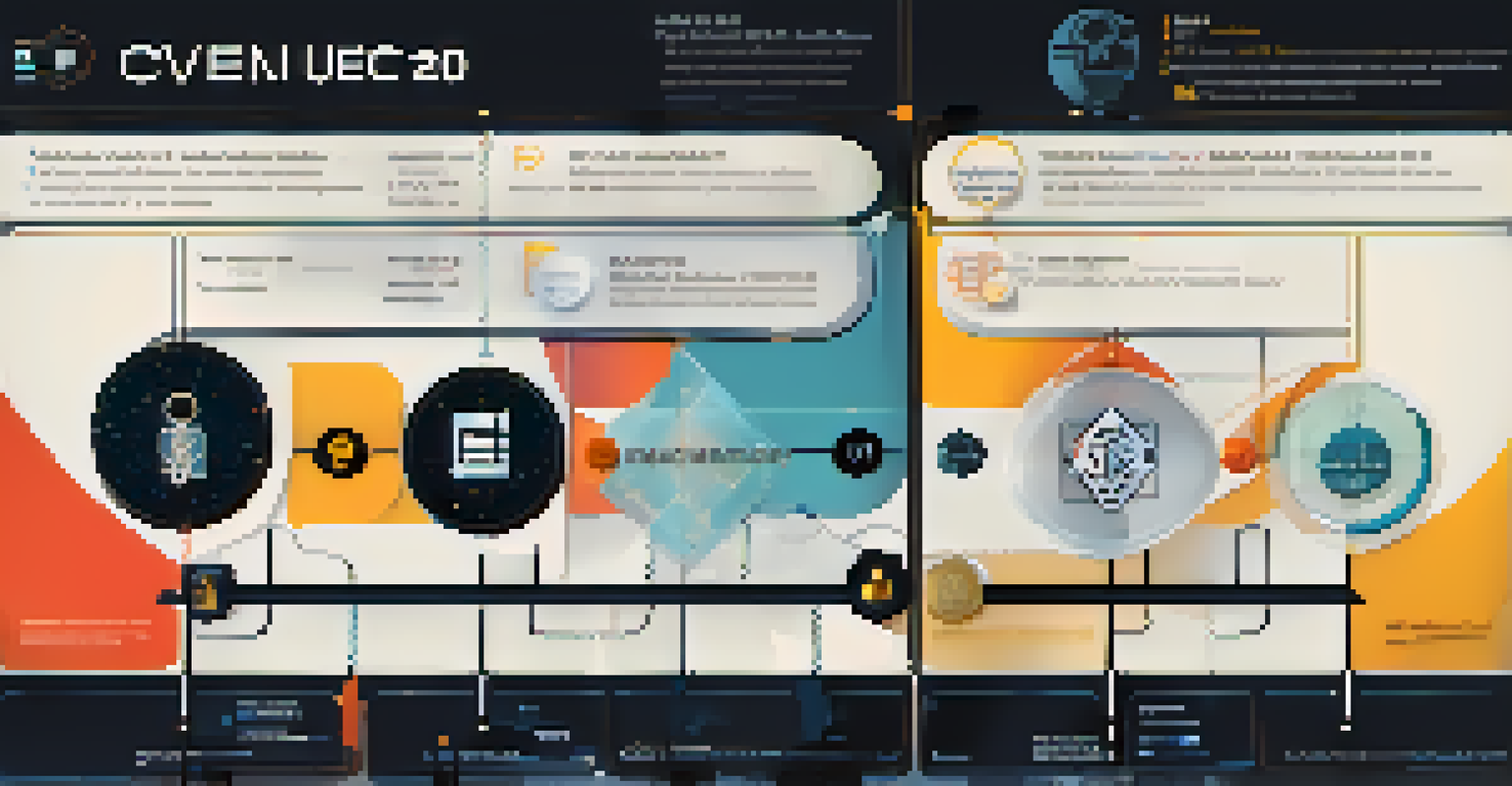Token Standards: ERC-20 vs. ERC-721 for Smart Contracts

What Are Token Standards in Smart Contracts?
Token standards are guidelines that define how tokens behave on a blockchain. They ensure consistency and compatibility across different platforms and applications, making it easier for developers and users to interact with tokens. By following these standards, developers can create tokens that are recognizable and usable within the Ethereum ecosystem.
Tokens are digital assets that can represent anything from currency to property, and their standards are crucial for ensuring interoperability across different platforms.
Two popular token standards on Ethereum are ERC-20 and ERC-721. While both serve unique purposes, they fundamentally differ in how they represent value and ownership. Understanding these distinctions is crucial for anyone looking to navigate the world of cryptocurrencies and digital assets.
In essence, token standards act like a common language, allowing developers to create applications that can seamlessly interact with a diverse range of tokens. This not only fosters innovation but also enhances the user experience by providing a familiar framework.
Understanding ERC-20 Tokens and Their Features
ERC-20 is the most widely used token standard on the Ethereum blockchain, designed for fungible tokens. Fungible means that each token is interchangeable with another of the same kind, similar to how a dollar bill can be exchanged for another dollar bill. This characteristic makes ERC-20 tokens ideal for creating cryptocurrencies and utility tokens.

The ERC-20 standard outlines a set of functions that must be implemented, such as transferring tokens, checking balances, and approving transfers. This ensures that all ERC-20 tokens can interact with various wallets and decentralized applications (dApps) seamlessly. Popular examples include Chainlink (LINK) and Uniswap (UNI), which have garnered significant attention in the crypto market.
Understanding Token Standards
Token standards like ERC-20 and ERC-721 provide essential guidelines that ensure consistency and compatibility for tokens on the blockchain.
One of the main advantages of ERC-20 tokens is their liquidity; they can be easily bought, sold, or traded on numerous exchanges. This liquidity provides users with flexibility and encourages broader adoption, making ERC-20 a go-to choice for many projects looking to launch their tokens.
Exploring ERC-721 Tokens and Their Unique Nature
In contrast to ERC-20, ERC-721 tokens are designed for non-fungible tokens (NFTs), which means each token is unique and cannot be replaced by another. This uniqueness allows for the representation of ownership of distinct assets, such as artwork, collectibles, or real estate. Think of it like owning a one-of-a-kind painting versus a mass-produced poster.
Non-fungible tokens (NFTs) give us the ability to own unique digital assets, transforming the way we think about art, collectibles, and ownership.
The ERC-721 standard provides a way to create tokens that represent ownership of these unique assets, defining functions that allow for tracking and transferring ownership. This is particularly important in the growing NFT market, where authenticity and provenance are key concerns. Notable examples of ERC-721 tokens include CryptoKitties and Bored Ape Yacht Club, which have captured the imagination of collectors worldwide.
The distinctiveness of ERC-721 tokens opens up new possibilities for creators and collectors alike, enabling them to monetize their digital creations. As the NFT space continues to expand, understanding the implications of ERC-721 will be crucial for anyone interested in this innovative field.
Key Differences Between ERC-20 and ERC-721 Tokens
While both ERC-20 and ERC-721 serve specific purposes within the Ethereum ecosystem, their core differences lie in fungibility and use cases. ERC-20 tokens are fungible and interchangeable, making them suitable for digital currencies and utility tokens. On the other hand, ERC-721 tokens are non-fungible, allowing for the representation of unique assets.
This difference in fungibility leads to varied applications; ERC-20 tokens are often used for crowdfunding and reward systems, whereas ERC-721 tokens are primarily utilized in the creation of digital art, collectibles, and gaming items. Understanding these applications helps developers and investors make informed decisions about which type of token to use for their projects.
Differences Between ERC-20 and ERC-721
ERC-20 tokens are fungible and interchangeable, whereas ERC-721 tokens are non-fungible and unique, catering to different use cases.
Moreover, the technical specifications also differ, with ERC-20 focusing on a standard set of functions for token management, while ERC-721 emphasizes uniqueness and ownership tracking. This fundamental distinction affects how each token type can be integrated into various platforms and applications.
Use Cases for ERC-20 Tokens in the Market
ERC-20 tokens have found widespread application in various sectors, particularly in the realm of decentralized finance (DeFi). Many DeFi projects utilize ERC-20 tokens as a means of raising funds and creating liquidity pools. For instance, lending platforms often use these tokens as collateral for loans, showcasing their versatility.
Moreover, ERC-20 tokens are commonly employed in Initial Coin Offerings (ICOs) and token sales, where startups raise capital by selling their tokens to investors. This has enabled numerous projects to launch successfully while providing investors with potential returns. Examples include projects like Binance Coin (BNB) and Tether (USDT), which have become integral to the crypto ecosystem.
The ability to trade ERC-20 tokens on various exchanges further enhances their appeal, allowing users to easily exchange them for other cryptocurrencies or fiat currencies. This liquidity drives demand and encourages adoption, making ERC-20 tokens a popular choice for new projects looking to enter the market.
Real-World Applications of ERC-721 Tokens
ERC-721 tokens have revolutionized the way we think about ownership in the digital age, particularly in the realms of art and collectibles. Artists can now tokenize their work, allowing them to sell unique pieces directly to collectors without intermediaries. This democratization of art sales has led to the emergence of platforms like OpenSea and Rarible, where users can buy and sell NFTs easily.
Beyond art, ERC-721 tokens are also being utilized in gaming, enabling players to truly own in-game items. For instance, players can buy, sell, and trade unique weapons or skins, creating a vibrant marketplace. Games like Axie Infinity have taken this concept to new heights, where players earn tokens by participating in the game, thus combining entertainment with investment.
Real-World Applications of Tokens
ERC-20 tokens are widely used in decentralized finance, while ERC-721 tokens enable ownership of unique digital assets like art and in-game items.
Additionally, ERC-721 tokens have potential applications in real estate, where unique digital representations of properties can be created. This could streamline the buying and selling process, making real estate transactions more transparent and efficient. As more industries explore the possibilities of NFTs, the impact of ERC-721 tokens will continue to grow.
The Future of Token Standards in Smart Contracts
As the blockchain landscape continues to evolve, the future of token standards like ERC-20 and ERC-721 looks promising. Innovations in these standards may emerge to address scalability, interoperability, and user experience challenges. For instance, newer standards could enhance functionality or introduce features that make it easier for developers to create and manage tokens.
Moreover, as more industries adopt blockchain technology, the demand for both fungible and non-fungible tokens will likely increase. This could lead to the development of hybrid token standards that combine the best features of both ERC-20 and ERC-721. Such advancements would further blur the lines between different token types and expand their potential use cases.

In conclusion, understanding the nuances between ERC-20 and ERC-721 token standards is essential for anyone looking to engage with blockchain technology. As these standards continue to develop and adapt, stakeholders across various sectors will need to stay informed to harness the full potential of smart contracts in their respective fields.